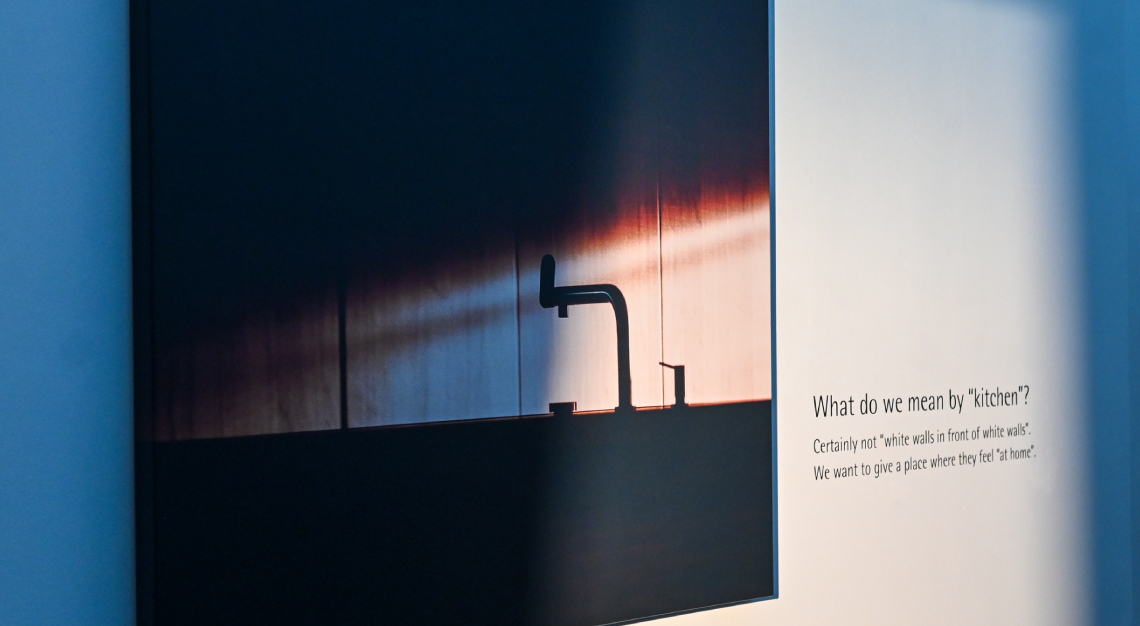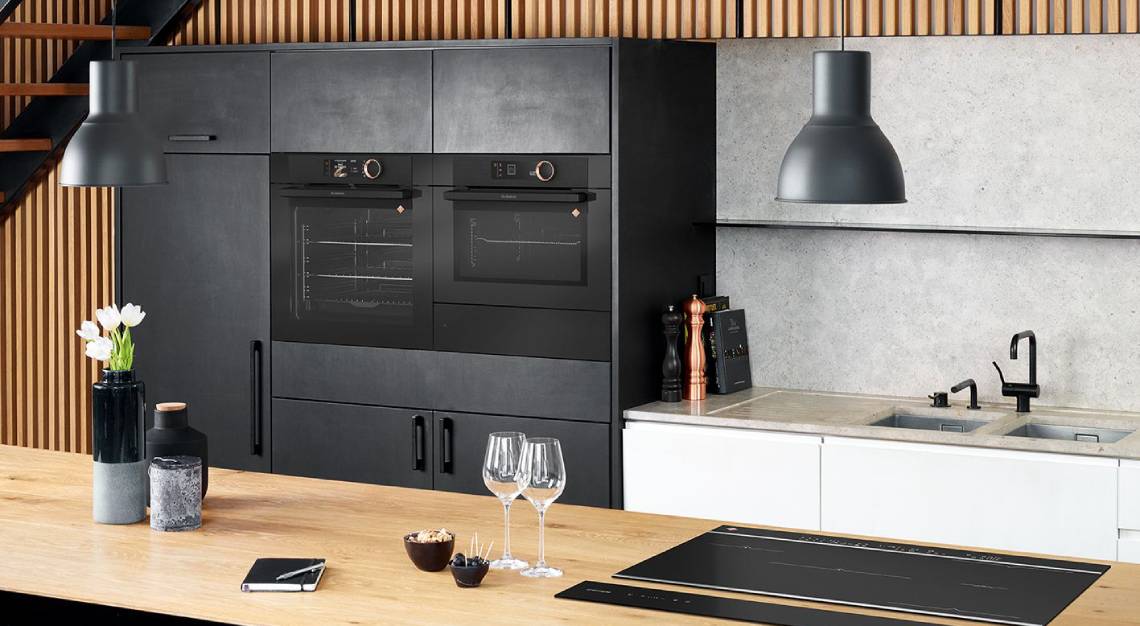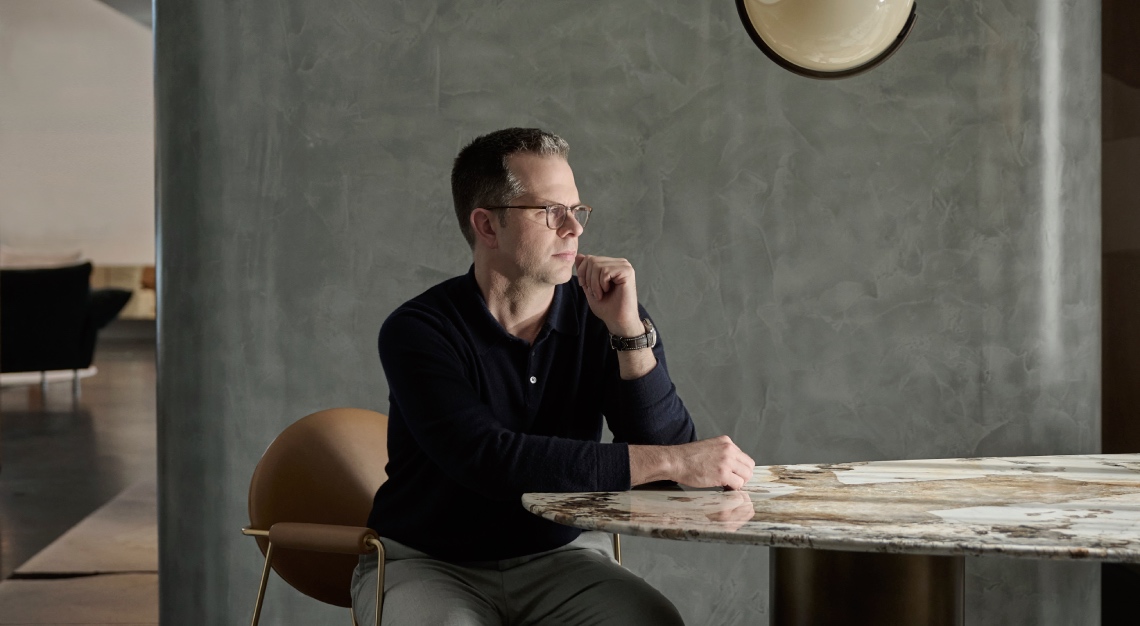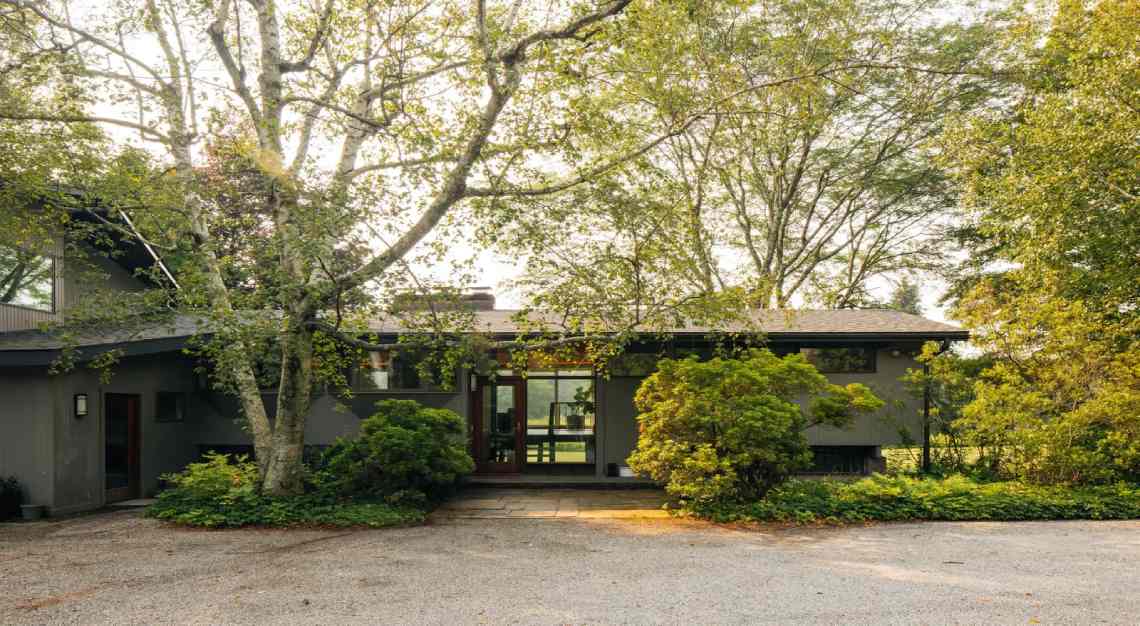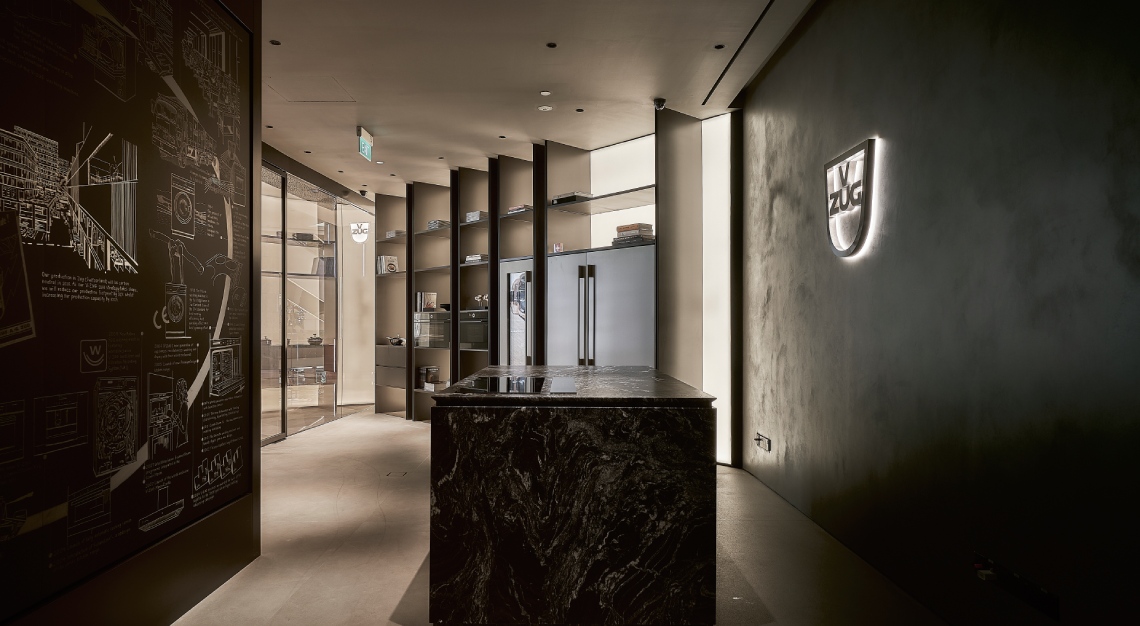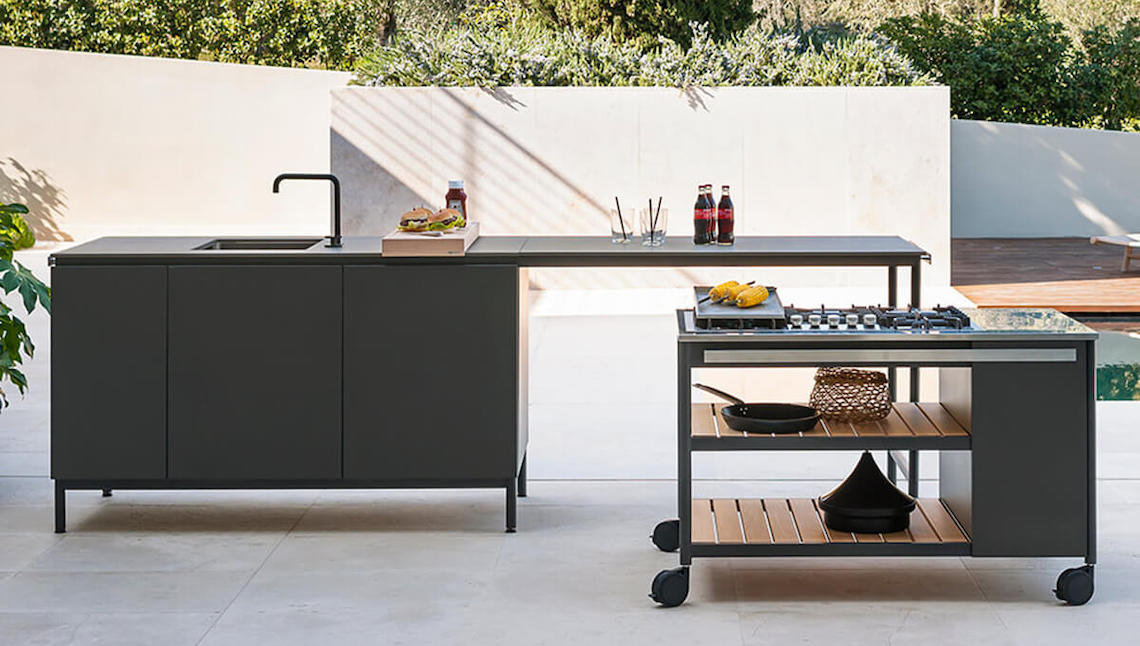Le Bernardin’s famously serene chef, Eric Ripert, built a minimalist kitchen that has maximal efficiency
At New York’s three-Michelin-starred Le Bernardin, that lone lobster claw sitting in a lime-green remoulade upon a sea of porcelain might seem the essence of simplicity, but because French chef and restaurateur Eric Ripert is behind it, you know better. Its minimal presentation belies the intricacies that went into its creation.
No surprise then that the celebrated chef would apply the same spare aesthetic to the renovation of his personal kitchen. Sleek efficiency was what he craved. “It looks like nothing,” he says, “like a table and a wall.” But that sparseness is all about performance. “It’s the Formula 1 of kitchens. I can cook for 20 people by myself.”
Ripert likes the clean look of a wall of cabinets concealing dishes, spices and cutlery but with plenty of space for it all. He went to German manufacturer Siematic for the cabinetry and worked with its experts on placing the various essentials just so.
When Ripert cooks at the 3.6m island, he can reach an arm to the refrigerator to retrieve the butter without taking his eyes off the scallops searing in the pan in front of him. That easy reach is no accident: it was measured to suit his arm’s length. “0.6 metres behind me, I have the fridge and access to the wine and freezer,” he says. “I’m not moving; I’m cooking. It’s ultra-efficient.”

The kitchen is also customised for his—and his family’s—height. Ripert and his teenage son are both over 1.8m, and his wife is also tall, so they had the Ceasarstone counters built to higher specifications. This was the advantage of starting fresh, rather than retrofitting an older kitchen. He opted for Ceasarstone, rather than marble or granite, because it resists scratching and staining, even with red wine. And it’s a breeze to clean. Ripert says: “It’s important to have a kitchen that’s easy to maintain when there’s no one to clean up after you.”
To that end, he installed two dishwashers, because when he entertains, there are always multiple courses with wine pairings. “When the guests leave, I have one for the glassware, one for the plates. I put everything in the machines, press a button and go take a nap,” he says with a laugh. And the efficiency of the postmeal clean-up was instrumental when selecting a cooking surface: a fiveburner glass induction hob and a larger side burner for stockpots. “A bit of spray, sponge, wipe it up and it’s done.”

A quick wipe down isn’t the main reason for choosing this kind of stove—by Gaggenau—however. In addition to Le Bernardin, he also uses it in his Manhattan apartment.
“What I like about induction,” Ripert says, “is that first it’s very economical, in terms of energy. When you use gas, you’re using a lot of heat that’s not needed, so energy-wise it doesn’t make sense. It also creates a lot of heat in the kitchen.” Induction does not give off the same kind of heat. It works magnetically, warming only metal placed on its surface. “I can be boiling water and put my hand next to it, and it’s cold,” he explains. Plus, induction is powerful. That pot of water will boil in just one minute.
His appliances are about not only efficiency but also precision. The other cooking surface on the island is his rectangular teppanyaki grill. “The heat is exactly the same from corner to corner and to the middle,” he says. “If I’m having a big party and want to cook 50 pieces of scallop, the heat will be the same everywhere on it.”
One other design element of the island that he borrowed from his professional life is the 25cm of worktop space between the cooking surfaces and the edge. “I can put plates in front of me and do it exactly like we do in the restaurant,” Ripert says. “It’s the way we compose dishes.”

He turned to Gaggenau for all his personal appliances even though he doesn’t have a professional relationship with the company because, in his opinion, it seemed the most technically advanced. That includes a venting system that pops up from the counter and another that sucks air down into the basement and funnels it outside—keeping smells and smoke away from guests and chef while not obstructing his line of vision to his friends and family. Ripert also wanted more than one oven: a combi, as well as a regular one. A combi oven can mix steam and convection heat. “You can put in halibut at 220 degrees for 12 minutes and it’s perfectly cooked,” he says. “You can put a whole cauliflower head in and steam it, then sear it. It’s very fast and gets the right crispiness.”
Within the cabinets are spaces designed for exactly how Ripert and his family use the equipment. “Siematic asked us how we entertain, and they came up with the ideas.” That includes pull-out cutting boards, a waste bin beneath the grill he can open with a knee, and drawers of varying heights to accommodate larger pots.

The previous kitchen in this space was cut off from the dining and entertaining area of the house, something that Ripert was eager to reverse. Now he can see 7.6m to the hearth at the other end of the living room, while friends can sit at the island as he cooks. “When I see houses being built with the stove against the wall and know the person who is cooking has to turn their back to the room, it drives me crazy,” he says.
His space, by contrast, was well studied. He says some architects think about only design, not actual cooking and flow. Some like to hang pots and pans and block your view. The secret to avoiding such glitches when constructing your dream kitchen? “Go to a specialist and explain how you will use your kitchen,” he says. “Do not let them do whatever they want.”
While his social need was baked in, so was one other request from Ripert—to feel connected to nature outside the big picture window.
“From the kitchen, I feel like I’m in the middle of a forest. In the summer, when you open the doors, you have the birds singing and the smell of the wood. Last winter there, during a blizzard, I was making soup and stew and looking at the snow and bird feeders by the window. It was very entertaining and soothing,” he says.
And for a perfectionist, he’s surprisingly satisfied. “I wouldn’t have done anything different. I’m very happy to walk into this house and be reunited with it. It’s my dream.”
This story was first published on Robb Report USA

